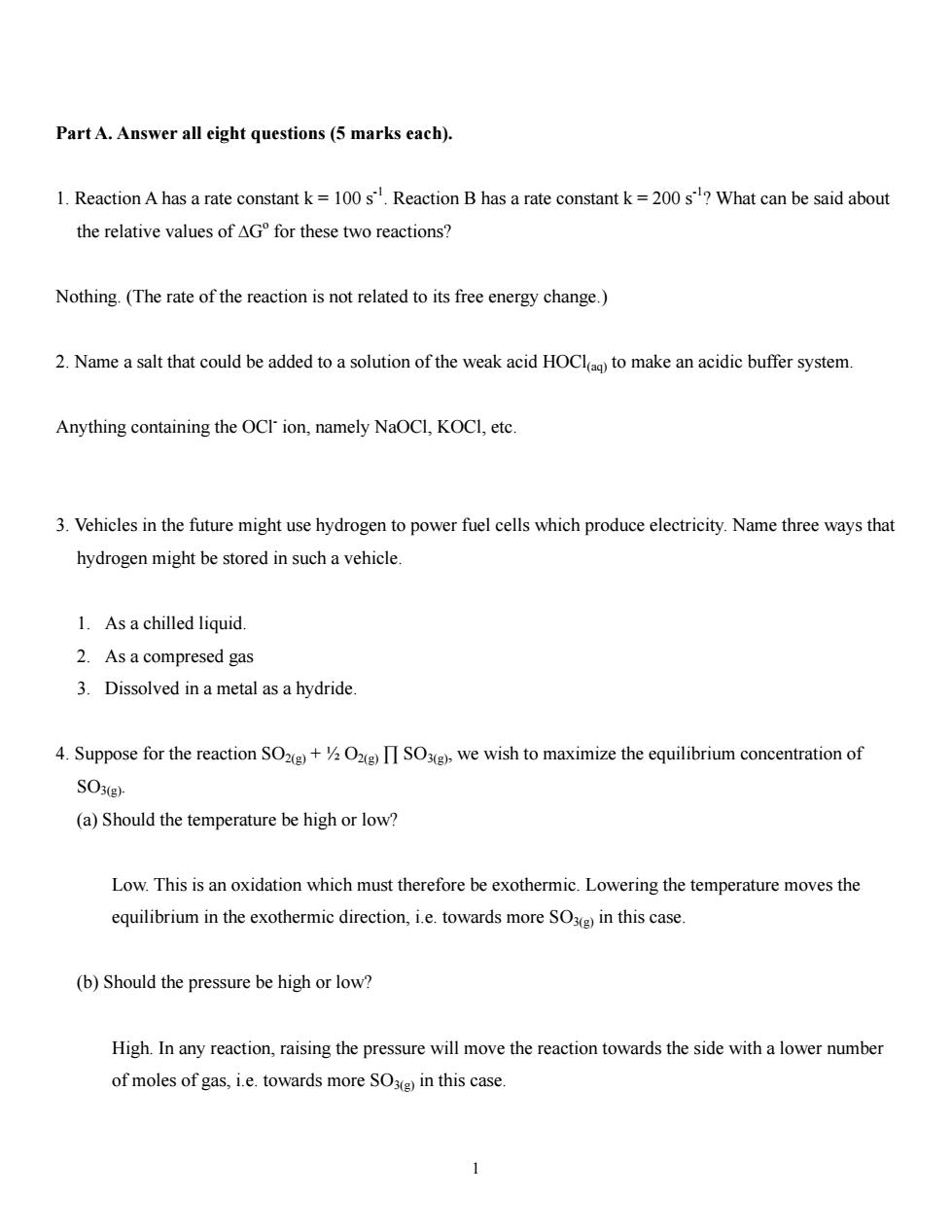正在加载图片...

Part A.Answer all eight questions(5 marks each). 1.Reaction A has a rate constant k=100s.Reaction B has a rate constant k=200 s?What can be said about the relative values of AG for these two reactions? Nothing.(The rate of the reaction is not related to its free energy change.) 2.Name a salt that could be added to a solution of the weak acid HOCl to make an acidic buffer system Anything containing the OCI ion,namely NaOCl,KOCI,etc. 3.Vehicles in the future might use hydrogen to power fuel cells which produce electricity.Name three ways that hydrogen might be stored in such a vehicle. 1.As a chilled liquid. 2.As a compresed gas 3.Dissolved in a metal as a hydride. 4.Suppose for the reaction SOSO)we wish to maximize the equilibrium concentration of SO3(g) (a)Should the temperature be high or low? Low.This is an oxidation which must therefore be exothermic.Lowering the temperature moves the equilibrium in the exothermic direction,i.e.towards more SO in this case. (b)Should the pressure be high or low? High.In any reaction,raising the pressure will move the reaction towards the side with a lower number of moles of gas,ie.towards more O in this case. 1 1 Part A. Answer all eight questions (5 marks each). 1. Reaction A has a rate constant k = 100 s-1. Reaction B has a rate constant k = 200 s-1? What can be said about the relative values of ∆Go for these two reactions? Nothing. (The rate of the reaction is not related to its free energy change.) 2. Name a salt that could be added to a solution of the weak acid HOCl(aq) to make an acidic buffer system. Anything containing the OCl- ion, namely NaOCl, KOCl, etc. 3. Vehicles in the future might use hydrogen to power fuel cells which produce electricity. Name three ways that hydrogen might be stored in such a vehicle. 1. As a chilled liquid. 2. As a compresed gas 3. Dissolved in a metal as a hydride. 4. Suppose for the reaction SO2(g) + ½ O2(g) ∏ SO3(g), we wish to maximize the equilibrium concentration of SO3(g). (a) Should the temperature be high or low? Low. This is an oxidation which must therefore be exothermic. Lowering the temperature moves the equilibrium in the exothermic direction, i.e. towards more SO3(g) in this case. (b) Should the pressure be high or low? High. In any reaction, raising the pressure will move the reaction towards the side with a lower number of moles of gas, i.e. towards more SO3(g) in this case